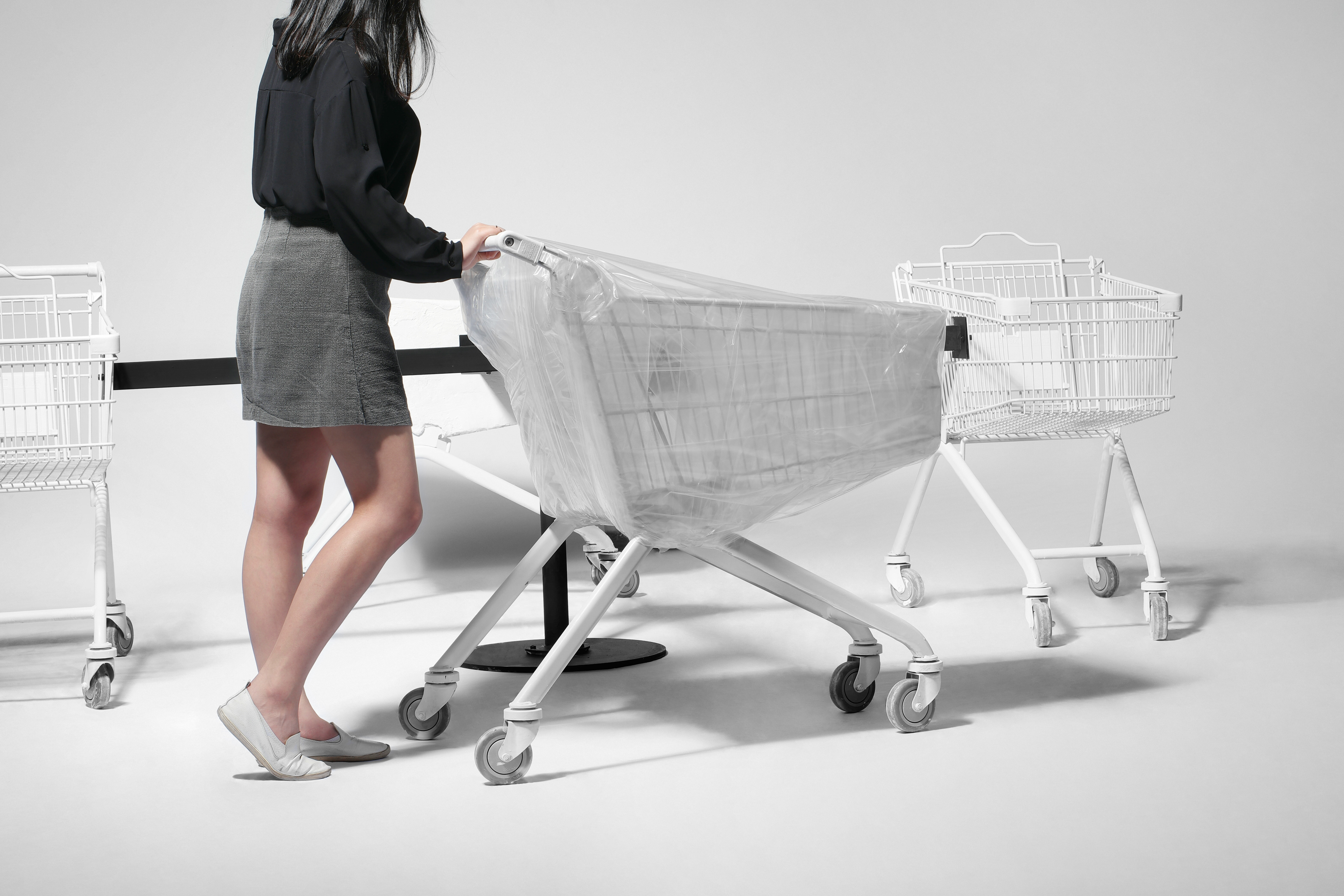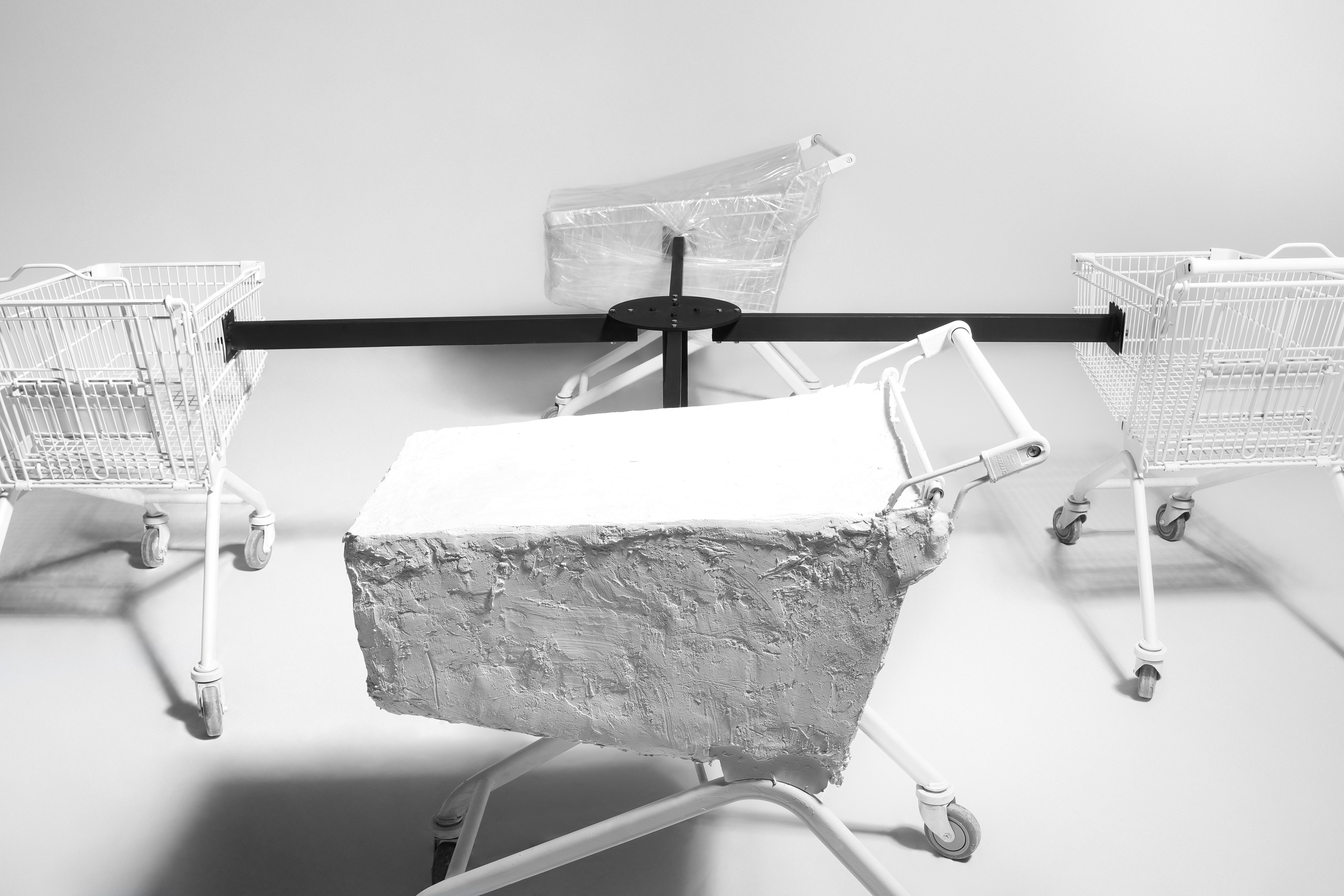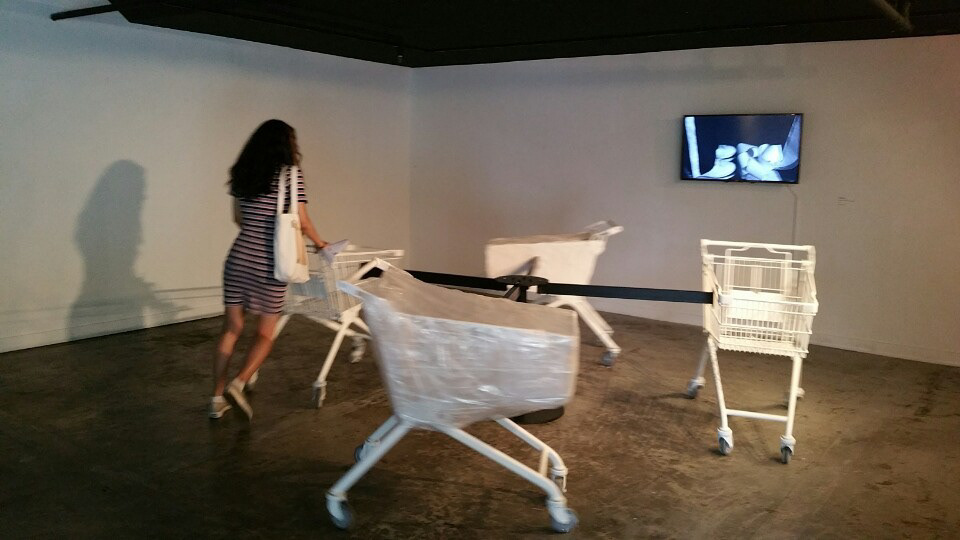What if 1: To buy, 2017
What if 1: To buy, 2017, Video Installation(Shopping carts, Steel, a bearing), 500*3500*947mm
In our daily lives, we constantly make assumptions—both consciously and unconsciously. One of the most telling examples is shopping. Our purchasing decisions are often based on habits and preconceived notions of quality, formed over time. The human ego naturally wants to believe that its choices are the “right” ones, reinforcing brand and product loyalty. This project explores how such assumptions shape our consumption behavior and questions the underlying motivations behind our everyday choices.
This interactive installation features four shopping carts attached to a central frame, allowing participants to push the carts in different directions. However, they cannot exit the designated structure, and eventually, the carts rotate along the same path. This physical limitation serves as a metaphor for the repetitive and constrained nature of consumer assumptions—how people follow an internalized cycle when deciding what to buy.
To extend the metaphor, a video accompanies the installation, showing people purchasing intangible items. Each transaction ends with a wordless receipt, underscoring the idea that nothing was truly acquired. This part of the work reveals that much of our consumption is shaped by imagination and belief rather than actual need or value.
Through this installation, I invite viewers to reflect on the invisible frameworks and imagined rewards that guide their behavior as consumers—and to question whether what they are seeking is truly being fulfilled.
-
일상의 흐름 속에서 우리는 끊임없이 가정(assumption)을 하며 살아갑니다.
그중에서도 쇼핑은 가장 대표적인 일상적 가정의 사례입니다.
사람들은 반복적인 소비를 통해 습관을 형성하고, 자신이 선택한 브랜드나 상품에 대한 신뢰와 충성도를 쌓아갑니다.
이는 인간의 자아가 자신의 선택이 ‘옳았다’고 믿고 싶어 하는 심리에서 비롯됩니다.
이 프로젝트는 사람들이 어떻게 가정을 하고, 그 가정이 일상 속 소비 결정에 어떤 영향을 미치는지를 시각적으로 드러내는 작업입니다.
관객은 쇼핑의 심리적 과정과 그 끝에 도달하는 보상(reward)의 형태를 영상과 설치물을 통해 경험하게 됩니다.
설치물에는 네 개의 쇼핑 카트가 중심 프레임에 연결되어 있어, 관객이 카트를 밀며 이리저리 이동할 수는 있지만,
결국은 프레임 밖으로 벗어날 수 없고, 회전은 다시 하나의 동일한 궤도를 반복하는 결과에 수렴하게 됩니다.
이 구조는 우리가 소비를 결정할 때 따르는 반복적이고 고정된 사고 구조, 즉 ‘가정의 순환’을 은유적으로 드러냅니다.
이 설치는 그 메타포를 확장하여, 비물질적인 것들을 구매하는 사람들의 영상을 함께 보여줍니다.
그리고 아무 말도 적히지 않은 영수증이 끊임없이 출력되는데, 이는 그들이 실제로 아무것도 소비하지 않았음을 상징합니다.
이 작업은 결국 소비 행위와 그 보상조차도 상상에 의해 만들어진 결과물일 수 있음을 이야기합니다.
우리가 믿고 반복하는 소비의 심리 구조가 실체 없는 가정의 결과일지도 모른다는 질문을 던지는 작업입니다.



